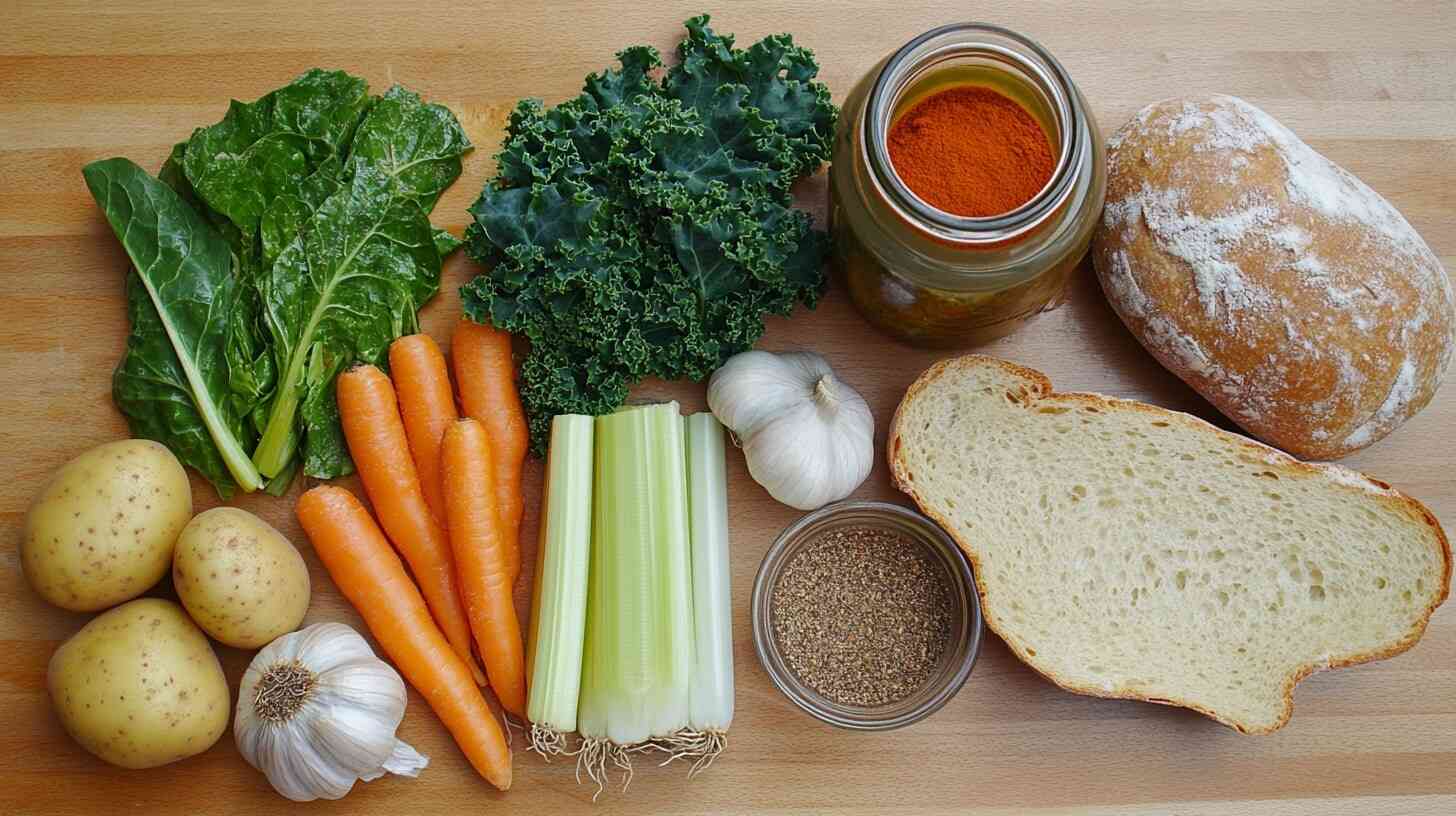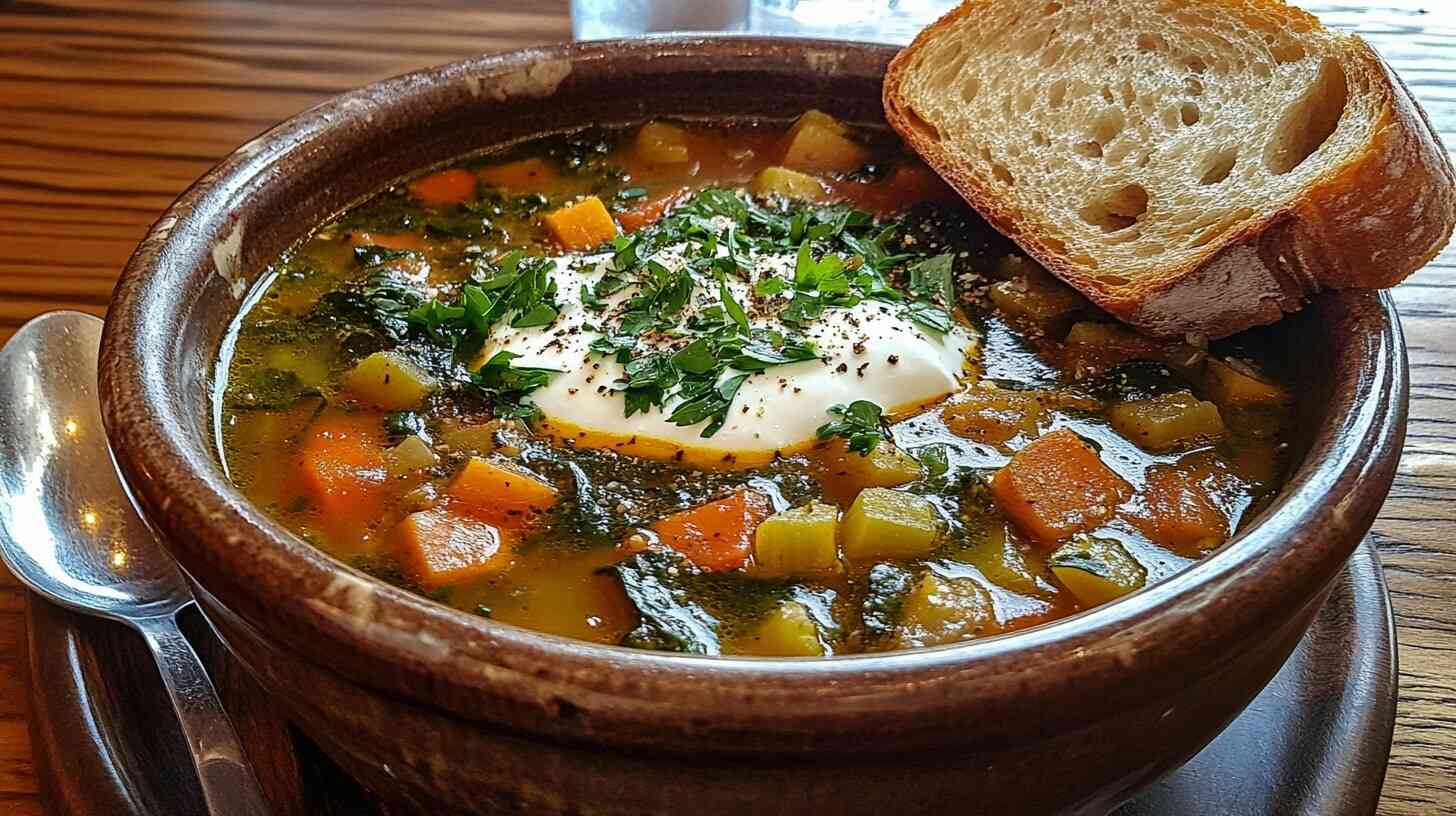Have you ever wondered what delicious flavors might be hiding in the mysterious waters of a wetland? This hearty dish isn’t actually made from swamp water, but rather takes inspiration from the rich, earthy ingredients found in marshy environments. Swamp soup combines vegetables, herbs, and proteins that create a unique taste experience that’s both comforting and adventurous.
What Is Swamp Soup?
Swamp soup gets its interesting name from its appearance and the ingredients typically used. Usually, swamp soup has a deep green color thanks to ingredients like spinach, kale, and other leafy greens. Additionally, this soup often includes ingredients commonly found in swamp environments such as mushrooms, wild rice, and sometimes even alligator meat in certain regional recipes!
The beauty of swamp soup is that it brings together flavors from different plants and proteins that create a rich, earthy taste. Furthermore, the combination of ingredients provides excellent nutrition while also offering a fun way to enjoy vegetables that kids might otherwise avoid.
Origins of Swamp Soup
Swamp soup has roots in several cultures, especially those living near wetland areas. For instance, communities in Louisiana developed their own versions using local ingredients from the bayou. Meanwhile, other variations can be found in cultures across the world where people lived near marshy areas and used what nature provided.
Why People Love Swamp Soup
People enjoy swamp soup not only for its unique flavor but also because it’s highly customizable. In fact, you can adjust the ingredients based on what’s available in your area. Most importantly, it’s a great way to introduce children to new vegetables in a fun, adventurous way!
Health Benefits of Swamp Soup
This marsh-inspired recipe is packed with nutrients that help keep your body strong and healthy. First of all, the leafy greens provide vitamins A, C, and K, which help your eyesight, immune system, and bones. Additionally, the mushrooms offer B vitamins and minerals that support your energy levels.
The combination of vegetables and protein makes this wilderness pot a complete meal. Consequently, it’s perfect for growing children who need balanced nutrition. Above all, this mixture can be adjusted to meet different dietary needs, making it accessible for most people.
Immune-Boosting Properties
One of the best things about this bayou broth is how it can help fight off colds and flu. Many of the ingredients have natural properties that strengthen your immune system. For example, garlic and onions contain compounds that help your body defend against illness.
Digestive Health
The fiber content in this green creation supports good digestion. Moreover, many of the herbs used in traditional recipes have properties that calm upset stomachs. As a result, this dish is often recommended when someone isn’t feeling well.
Swamp Soup Ingredients
The beauty of this wetland recipe lies in its flexibility, but here’s a basic list of ingredients for a classic version:

- 2 tablespoons olive oil
- 1 onion, chopped
- 3 garlic cloves, minced
- 1 cup mushrooms, sliced
- 4 cups chicken or vegetable broth
- 2 cups mixed greens (spinach, kale, collards)
- 1/2 cup wild rice
- 1 teaspoon thyme
- Salt and pepper to taste
- Optional: chicken, sausage, or white beans for protein
Remember, these are just the basic ingredients. You can customize your wilderness broth according to your preferences and what’s available in your kitchen!
Key Ingredient Variations
Depending on where you live, you might use different greens in your marshy mixture. Some people prefer watercress or sorrel for a tangy flavor. Alternatively, others might use okra to give the broth a thicker texture.
Protein Options
While vegetarian versions are popular, many bayou recipes include protein. For instance, chicken or turkey work well with the flavors. However, some regional versions might use more unusual proteins like alligator meat or frog legs for an authentic wetland experience!
How to Make Swamp Soup: Step by Step
Creating this wilderness pot is simple and fun! Here’s a quick overview of the process:
- Heat olive oil in a large pot
- Sauté onions and garlic until fragrant
- Add mushrooms and cook until soft
- Pour in broth and bring to a simmer
- Add wild rice and cook for 20 minutes
- Stir in greens and seasonings
- Simmer for another 10 minutes
- Add protein if using and heat through
- Serve hot with crusty bread
The full cooking process takes about 45 minutes, but the result is worth the wait! Plus, this green mixture tastes even better the next day as the flavors continue to develop.
Tips for Perfect Results
For the best outcome, don’t rush the cooking process. First, make sure to sauté the onions and garlic properly to create a flavor base. Additionally, add the greens near the end of cooking to preserve their color and nutrients.
Kid-Friendly Adjustments
If making this wetland-inspired dish for children, you might want to chop the greens extra small or even blend some of them into the broth. Furthermore, giving the creation a fun name like “Monster Marsh Stew” or “Shrek’s Special Brew” can make it more appealing to young eaters. For an easy kid-friendly side, try Dino Nuggets in the Air Fryer a crispy and fun addition that even picky eaters will love!

Regional Variations of This Wilderness Recipe
Swamp soup takes on different forms depending on where it’s made. Consequently, you’ll find exciting variations across different regions and cultures.
Louisiana Bayou Gumbo
In Louisiana, this marsh-inspired dish often resembles gumbo with okra, file powder, and sometimes alligator meat. Moreover, it usually starts with a dark roux that gives it a rich, distinctive flavor and thicker texture.
Asian-Inspired Green Broth
Asian versions might include ingredients like bok choy, water chestnuts, and lemongrass. As a result, these mixtures have a lighter, more fragrant quality while still maintaining the characteristic green color.
European Forest Variations
In parts of Europe, similar recipes might use local wild greens, mushrooms, and herbs. For example, in Eastern Europe, sorrel is often used to create a tangy broth that has a similar appearance to what we call swamp soup.
Serving and Pairing Suggestions For swamp soup
This wilderness-inspired dish makes a complete meal on its own, but there are many ways to enjoy it as part of a larger meal too. If you’re looking for a delicious seafood pairing, consider trying this Master Branzino Fillet Recipe for a light and flavorful complement to the rich, earthy flavors of swamp soup.
Best Breads to Serve with This Green Mixture
Crusty bread is perfect for dipping into the flavorful broth. In particular, a rustic loaf or cornbread complements the earthy flavors beautifully. Similarly, garlic bread adds another dimension of flavor that children especially enjoy.
Drink Pairings
For adults, a crisp white wine or light beer pairs well with this bayou creation. Meanwhile, children might enjoy apple juice or lemonade as refreshing counterpoints to the rich flavors. If you’re looking for an easy and satisfying side, these Frozen Fish Sticks in the Air Fryer are a quick, crispy option that pairs well with the soup’s comforting flavors.
Garnishes and Toppings
Don’t forget to add some final touches! For instance, a dollop of sour cream, fresh herbs, or croutons can elevate your wilderness broth. Additionally, a sprinkle of grated cheese is always popular with younger eaters.
Frequently Asked Questions About Swamp Soup
What is swamp soup?
Swamp soup is a nutritious dish made with leafy greens, mushrooms, and various vegetables that give it a greenish, wetland-like appearance. Despite its name, it doesn’t come from actual swamps but rather incorporates ingredients that might be found in marsh environments. The creation is known for its earthy flavors and high nutritional value.
Is swamp soup healthy?
Yes, this wilderness broth is very healthy! It’s packed with vitamins and minerals from leafy greens like spinach and kale. Additionally, it contains fiber, proteins, and antioxidants depending on the ingredients used. Furthermore, the combination of vegetables and herbs provides immune-boosting properties, making it an excellent choice for maintaining good health.
What soup do Mexicans eat when sick?
When Mexicans are sick, they often turn to Caldo de Pollo, a chicken soup made with vegetables, herbs, and sometimes rice. This dish is similar to chicken noodle soup in American culture but typically includes Mexican herbs and spices like cilantro, lime, and sometimes chili. Much like our wetland-inspired recipe, it’s believed to have healing properties that help with recovery from colds and flu.
What was Julia Child’s favorite soup?
Julia Child was known to particularly enjoy French onion soup, which she featured in her cookbook “Mastering the Art of French Cooking.” While this isn’t similar to our bayou broth in appearance, both mixtures share a dedication to developing deep flavors through careful cooking techniques. Julia Child appreciated soups that transformed simple ingredients into complex flavor experiences, a quality that good wilderness-inspired recipes also possess.

Swamp Soup
Equipment
- Large Pot
- Wooden Spoon
- Knife
- Cutting board
Ingredients
Main Ingredients
- 2 tbsp olive oil
- 1 onion chopped
- 3 cloves garlic minced
- 1 cup mushrooms sliced
- 4 cups chicken or vegetable broth
- 2 cups mixed greens such as spinach, kale, or collard greens
- 1/2 cup wild rice uncooked
- 1 tsp thyme
- salt and pepper to taste
Optional Add-ins
- 1 cup cooked chicken or sausage for added protein
- 1 cup white beans for a vegetarian protein option
- 1/2 tsp paprika for extra flavor
Instructions
- Heat olive oil in a large pot over medium heat.
- Add chopped onion and sauté for 3-4 minutes until softened.
- Stir in minced garlic and sliced mushrooms, cooking for another 2 minutes until fragrant.
- Pour in the broth and bring to a simmer.
- Add the wild rice and thyme, then cover and cook for 20 minutes.
- Stir in the mixed greens, salt, and pepper, then simmer for another 10 minutes until the greens are tender.
- If using optional proteins like cooked chicken, sausage, or white beans, add them now and heat through.
- Taste and adjust seasoning as needed.
- Serve hot with crusty bread on the side.
